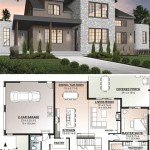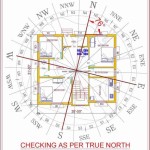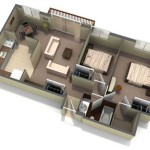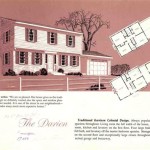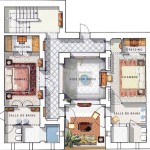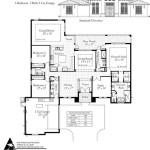Floor Plan Design: Tiny House
The increasing popularity of tiny houses reflects a growing desire for minimalist living, financial freedom, and environmental consciousness. A well-designed floor plan is crucial for maximizing functionality and comfort within a limited space. This article explores key considerations and strategies for effective tiny house floor plan design.
One of the initial steps in designing a tiny house floor plan is establishing clear priorities and needs. This involves determining the number of occupants, essential amenities, and desired lifestyle elements. For example, a couple working remotely may prioritize a dedicated workspace, while a single individual might focus on ample storage for recreational equipment.
Space optimization is paramount in tiny house design. Multi-functional furniture, such as sofa beds or tables with built-in storage, can significantly enhance space efficiency. Vertical space should be utilized effectively with loft beds, high shelving, and strategically placed windows to maximize natural light and create a sense of spaciousness.
Careful consideration of traffic flow is essential for creating a comfortable and functional living environment. Minimizing hallways and opting for an open floor plan can create a sense of openness and improve circulation within the tiny house. Strategic placement of doorways and furniture can further enhance the flow of movement.
Natural light plays a vital role in making a small space feel larger and more inviting. Incorporating large windows, skylights, and glass doors can maximize natural light penetration. Light-colored walls and reflective surfaces can further enhance the brightness and sense of spaciousness.
Ventilation is crucial for maintaining air quality and preventing moisture buildup in a tiny house. Properly sized windows, vents, and potentially a ceiling fan or exhaust fan can ensure adequate ventilation and airflow. Strategic placement of windows can also facilitate cross-ventilation.
Storage solutions are essential in a tiny house to maintain a clutter-free and organized environment. Built-in shelving, under-bed storage, and drawers integrated into furniture can maximize storage capacity. Utilizing wall space with hooks and vertical organizers can further enhance storage options.
The choice of appliances and fixtures should prioritize compact and energy-efficient models. Smaller refrigerators, combination washer-dryers, and tankless water heaters can save valuable space and reduce energy consumption. Considering the long-term costs and efficiency of appliances is essential for sustainable tiny house living.
Accessibility is an important factor to consider, especially for individuals with mobility limitations. Ensuring adequate clearance around furniture, incorporating grab bars in the bathroom, and opting for a single-floor layout can enhance accessibility within the tiny house.
Privacy considerations are crucial, particularly for individuals sharing a tiny house. Strategic placement of furniture, curtains, or sliding doors can create distinct zones within the open floor plan. Loft spaces can offer a degree of privacy for sleeping areas.
Building codes and regulations vary by location and should be carefully researched before finalizing a tiny house floor plan. Ensuring compliance with local building codes is essential for safety and legality. Consulting with local authorities can provide clarity on specific regulations.
The exterior design of a tiny house should complement the floor plan and overall aesthetic. Consideration should be given to the roofline, siding material, and window placement. The exterior design can significantly impact the visual appeal and functionality of the tiny house.
Budget constraints are a significant factor in tiny house design. Establishing a realistic budget early in the planning process can help guide material choices and design decisions. Prioritizing essential elements and exploring cost-effective alternatives can help keep the project within budget.
Professional assistance from architects or designers specializing in tiny houses can provide valuable expertise and insights. They can offer creative solutions for space optimization, ensure compliance with building codes, and create a customized floor plan that meets specific needs and preferences.
Software and online tools can assist with visualizing and refining the tiny house floor plan. 3D modeling software allows for virtual walkthroughs and experimentation with different layouts. Online resources can provide inspiration and templates for tiny house floor plans.
Flexibility and adaptability are important considerations in tiny house design. Life circumstances and needs may change over time, so designing a floor plan that can adapt to future needs is beneficial. Modular furniture and adaptable spaces can provide flexibility for changing needs.
Regularly reviewing and refining the floor plan throughout the design process is crucial. Gathering feedback from others and considering different perspectives can lead to improvements and ensure the final design meets all requirements and expectations.

Tiny House Floor Plans With Lower Level Beds Tinyhousedesign Design

Family Tiny House Design Floor Plans Layout

Tiny House Plan Examples

Tiny House Floor Plans With Lower Level Beds Tinyhousedesign

Floorplan Image For Plan Small House Plans Floor Tiny

Tiny House Design Floor Plans

Tiny House Floor Plans 32 Home On Wheels Design

Beautiful Tiny House Plan Ideas For Your Inspiration Engineering Discoveries One Bedroom Plans Small Layout

Tiny House Floor Plan Design

2 Bedroom Tiny House Plans Blog Eplans Com



